



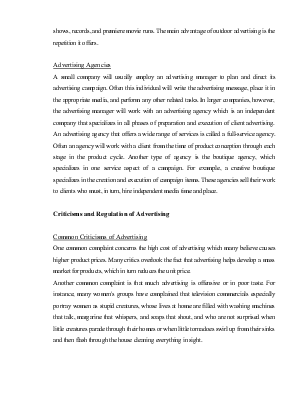
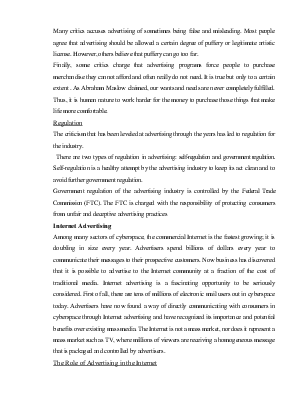
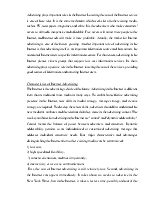
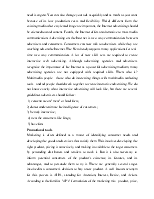
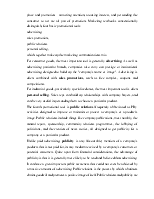
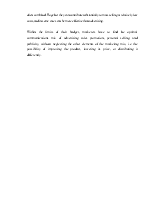




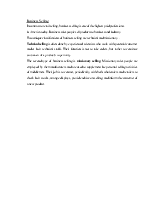

Vadim Gnatyuk IB-411
Promotional and advertising tools
A wise man once said, "The person who saves money by not advertising is like the man who stops the dock to save time." In today's fast-paced high-tech age, businesses have to use some form of advertising to make prospects aware of their products and services.
Even famous companies like Coca-Cola and Pepsi continually spend money on advertising to support recognition of their products and to keep their names in the forefront of the public's eye. So the question is not whether or not you can afford to advertise, you simply must if you want your business to succeed. Some questions you should consider before buying ads are:
What media is the best to use?
How important is creativity?
Is there a way to buy space and time that will stretch my advertising budget?
When it comes to advertising, a lot of people really do not know what they want, where to get it or what
to do with it after they have it. This aid will help you learn to determine what type of advertising media is best for you, and learn to identify guidelines you can use to obtain the advertising exposure you need. It will help you identify ways to make your advertising more cost efficient.
Advertising is an investment in your business's future. And like any investment, it is important to find out as much as you can before you make a decision. You will be able to use this aid as a reliable
reference tool often in the months and years to come.
The American Marketing defines advertising as "any paid form of non-personal presentation of ideas, goods, or services by an identified sponsor. This definition stresses the non-personal quality of advertising and distinguishes it from other promotional techniques such as personal selling.
Types of Advertising
There are two types of advertising. Product advertising is designed to promote a product or product line. Institutional advertising is designed to promote an image or goodwill message of a company, industry, organization, or government.
Product Advertising
Product advertising can be primary or selective. The aim of primary advertising is to stimulate an increase in the sale in a class of goods without regard to brand. These ads are usually run by trade associations or unions. The aim of selective advertising, on the other hand, is to persuade consumers to purchase a specific product. This is the type of advertising you commonly find on newspapers and magazines, and on radio and television.
Institutional Advertising
Institutional Advertising is an adv that aimed at promoting the company, not the product is produces.
Advertisers use institutional (Or corporate) advertising for several purposes. For example, to promote a new store opening in Terre Haute, Indiana, J.C. Penney took out ads in the local newspapers that announced the closing of their old store, and invited people to their new small location.
Cities, states, and nations often use institutional advertising to promote their image and to attract business and tourism to their region. For example, Las Vegas featured a "No One Does It Better" campaign, New York showcased its "I Love New York" theme, and Virginia sponsored the popular "Virginia is for Lovers" campaign all to attract tourist dollars.
Types of Advertising Media
In advertising, the term media refers to any avenue used to persuade the consumer to make a purchase. The media include television, newspapers, radio, magazines, direct mail, outdoor, transit, or any other vehicle used to expose an ad message to a target market
Newspapers
Newspaper advertising has many advantages. Its general appeal means the advertising reaches large portions of a local market or metropolitan area. Another is its relative low cost per thousand. In addition, they are timely: some smaller newspapers appear weekly, but most newspapers are dailies. And their special interest sections such as entertainment, business, sports, and family pages are effective in reaching a target market. However, there are also disadvantages to using newspapers, and most of them represent the flipsides of the advantages enumerated. Many national advertisers use cooperative advertising, because they can share the cost whir die local retailers who feature their products.
Television
Television is the second most popular advertising
medium. Television offers many
advantages to advertisers: both maximum reach and maximum frequency. Reach is the number of
potential viewers who have TV sets, and frequency
is the number of times a message can be run.
In addition, television is demographically selective, which means it is relatively easy to reach a target market. Finally, televisionhas superior product demonstration capability because of its visual dimension. 'W
The major disadvantage of television is its high absolute cost and many local advertisers or small companies simply cannot afford to buy TV time. Another disadvantage is its clutter and noise level, especially during prime time. In addition, it takes time to prepare a TV commercial and this can be a disadvantage for national advertisers because they may lose out on timely events that they could use to their advantage.
Direct Mail
Уважаемый посетитель!
Чтобы распечатать файл, скачайте его (в формате Word).
Ссылка на скачивание - внизу страницы.